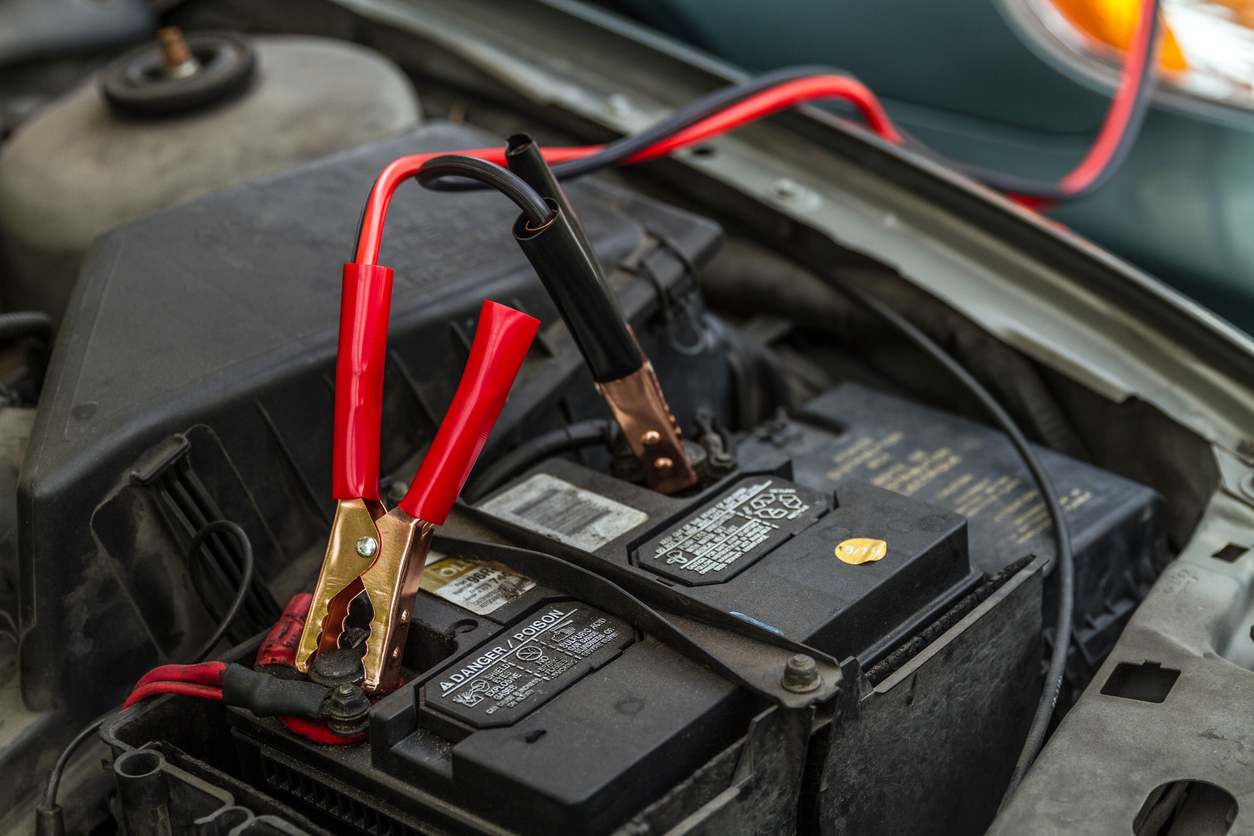
Jumper cables attached to a car battery
Car Battery (Series and Parallel Circuits) - Teacher's Guide
Grades 9-12
This lesson focuses on two main ideas:
- The importance of a car battery and how to “jump” it when it’s dead.
- Differences between series and parallel circuits
Procedure
INTRODUCTION (15 minutes)
Read the introduction to students and review new vocabulary. Students will watch the “Motorweek” video. After the video, have a discussion around the essential questions and thinking questions aligned to the topic and video.
EXTENSION (15-30 minutes)
Complete extension activities with students, as you see fit.
ASSESSMENT (15 minutes)
Have students apply their newfound knowledge by completing a Summative CER on the lesson using evidence from the video and activities as support.
REFLECTION (10 minutes)
Have students complete a reflection.
Standards
HS-PS2-5.
Plan and conduct an investigation to provide evidence that an electric current can
produce a magnetic field and that a changing magnetic field can produce an electric
current.
- Science and Engineering Practices
Planning and Carrying Out Investigations
Planning and carrying out investigations to answer questions or test solutions to problems in 9–12 builds on K–8 experiences and progresses to include investigations that provide evidence for and test conceptual, mathematical, physical and empirical models. - Plan and conduct an investigation individually and collaboratively to produce data to serve as the basis for evidence, and in the design: decide on types, how much, and accuracy of data needed to produce reliable measurements and consider limitations on the precision of the data (e.g., number of trials, cost, risk, time), and refine the design accordingly.
- Disciplinary Core Ideas
PS2.B: Types of Interactions
- The fact that atoms are conserved, together with knowledge of the chemical properties of the elements involved, can be used to describe and predict chemical reactions.
- Forces at a distance are explained by fields (gravitational, electric, and magnetic) permeating space that can transfer energy through space. Magnets or electric currents cause magnetic fields; electric charges or changing magnetic fields cause electric fields.
- “Electrical energy” may mean energy stored in a battery or energy transmitted by electric currents. (secondary)
- Crosscutting Concepts
Cause and Effect
- Empirical evidence is required to differentiate between cause and correlation and make claims about specific causes and effects.
Summative CER
Option 1:
Construct an argument on whether it is better for a car battery to operate as a series or parallel circuit. Use evidence and reasoning from the videos and activities to support your argument.
Option 2:
A student claims that the voltage and current in parallel and series circuits are always the same regardless of the point where they are in the circuit. Use evidence and reasoning from the videos and activities to support or refute the student’s claim.
Reflection Questions
- What are the differences between series and parallel circuits? Does one have an advantage over the other?
- Why does a car need a car battery to function and is it better for the car battery to operate with a series or parallel circuit?
Summative CER Rubric
| No Response Score Point 0 |
Not There Yet Score Point 0.5 |
Beginning To Score Point 0.75 |
Yes Score Point 1.0 |
|---|---|---|---|
| The claim is missing | The claim is incorrect or irrelevant. | The claim partially takes a position on the topic or issue addressed within the prompt. | The claim takes an appropriate position on the topic or issue addressed within the prompt. |
| There is no type of evidence in the response | The evidence is irrelevant or does not support the claim. | The evidence partially supports the claim and demonstrates some understanding of the topic or text, using appropriate sources. | The evidence supports the claim and demonstrates a strong understanding of the topic or text, using appropriate sources. |
| There is no use of words, phrases, and clauses to create cohesion and to clarify the relationship between the claim and evidence. | Use of words, phrases and clauses fail to show or explain any relationship between the claim and evidence. | Scientific words, phrases, and clauses used lack cohesion but partially clarify the relationship between the claim and evidence. | Appropriate scientific words, phrases, and clauses are used to create cohesion and to clarify the relationship between the claim and evidence. |